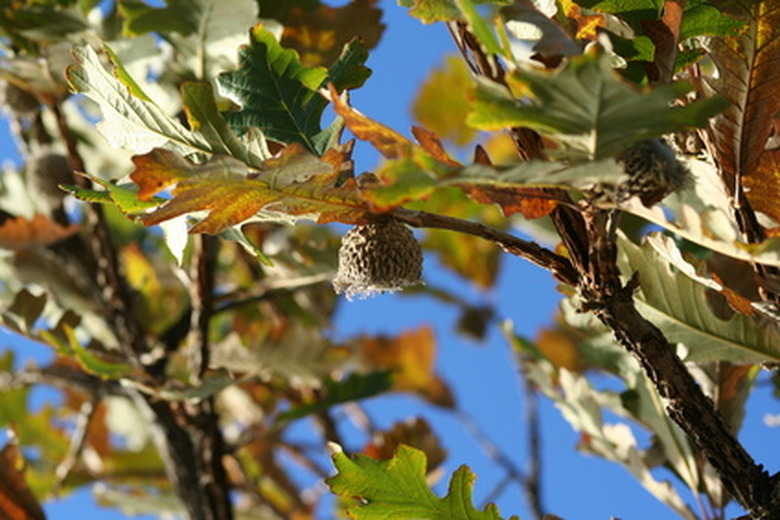Insects That Attack Oak Trees
Oak trees are common shade and street trees that grow 20 to 100 feet tall, depending on the species, which include evergreen and deciduous. Oak trees produce acorns, which provides food for birds, squirrels, deer and other wildlife. Although many pests attack oak trees, usually only immature or small trees suffer severe damage. Insecticides can help control or eliminate pests.
Borers
Borers generally attack stressed or diseased oak trees. Roundheaded borers (Ceramdycidae spp.) are the larvae of longhorned beetles and have segmented whitish bodies. They penetrate deeply into the wood of oak trees while feeding. Flatheaded borers (Buprestidae spp.) have segmented pinkish bodies and are the larvae of metallic woodborers. They tunnel meandering trails in the cambium just under the bark as they feed.
- Oak trees are common shade and street trees that grow 20 to 100 feet tall, depending on the species, which include evergreen and deciduous.
- have segmented pinkish bodies and are the larvae of metallic woodborers.
Cankerworms
Since cankerworms move in a looping manner, they also are called loopers or inchworms. They have green, black or reddish-brown bodies with one or more stripes of white, green or black. They are the larvae of wingless tan or grayish-brown moths. Paleacrita vernata larvae hatch in the spring, and Alsophila pometaria hatch in the fall.
Cankerworms chew holes in the leaves of oak trees, often leaving just the midrib. A heavy infestation of cankerworms can destroy all the leaves on a tree. If a tree is completely defoliated several years in a row, it may lose vigor and die.
- Since cankerworms move in a looping manner, they also are called loopers or inchworms.
- A heavy infestation of cankerworms can destroy all the leaves on a tree.
Gypsy Moth Larvae
The larvae of gypsy moths (Lymantaria dispar) hatch in the spring. They are black with five pairs of blue spots on the front part of their bodies and six pair of red spots on the rear portion. Gypsy moths are whitish or dark brown with black marks.
Gypsy moth larvae feed on the leaves of oak trees during the night and hide during the day. A severe infestation of the larvae can quickly strip a tree of all its foliage. If a tree loses it foliage several years in a row, it may decline and die.
Kermes Scale Nymphs
Two types of kermes scale insects attack oak trees – pubescent leaf scale (Nanokermes pubescens) and pin oak scale (Allokermes galliformis). Scale insects resemble immobile tan globular specks. The females live on the stems and midribs of the leaves, and the males live on the trunk and main branches.
- The larvae of gypsy moths (Lymantaria dispar) hatch in the spring.
- A severe infestation of the larvae can quickly strip a tree of all its foliage.
The nymphs eat the foliage and terminal growth of oak trees. This results in distorted leaves and drooping terminal growth that may drop off the tree. Severe infestations of scale insects can cause reduced growth, yellowing foliage and twig dieback.
